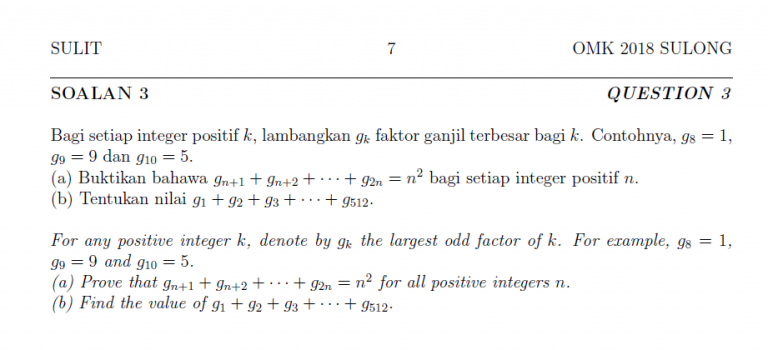Integration Question: ∫ [f(x) / (1 + x)^2]dx, where f(x) is a polynomial of degree two in x, such that f(0)=1,f(1)=3,f(-1)=5.?
Answer
Since f(x) is a polynomial of degree two in x,
Let f(x) = ax^2 + bx + c, where a,b,c are constants.
Let’s find f(x) first.
f(0) = 1 implies, c = 1.
f(1) = 3 implies, a + b + c = 3
or a + b = 2 , or b = 2 – a …(1)
f(-1) = 5 implies, a – b + c = 5
or a – b = 4 …(2)
Substituting (1) into (2), we get,
a – [ 2 – a ] = 4
2a = 6 or a = 3.
Thus, b = 2 – a = 2 – 3 = -1.
Hence, f(x) = 3x^2 – x + 1
Note that by long division or by the identity below,
3x^2 – x + 1 = 3(x + 1)^2 – 7x – 2
We get,
[ 3x^2 – x + 1 ] /[1 + x]^2 = 3 – [7x + 2]/ [1 + x]^2
And that together with below,
[7x + 2]/ [1 + x]^2 = 7 /(x + 1) – 5 /(x+1)^2
Gives,
[ 3x^2 – x + 1 ] /[1 + x]^2 = 3 – 7 /(x + 1) + 5 /(x+1)^2
Now, we have an “integratable form”.
∫ [f(x) / (1 + x)^2] dx
= ∫ [3x^2 – x + 1] / (1 + x)^2] dx
= ∫ [ 3 – 7 /(x + 1) + 5 /(x+1)^2 ] dx
= 3x – 7 log(x + 1) – (5/[x + 1]) + C
where C is any arbitrary constant.
Note: Sometimes log(x + 1) can also be written as ln (x + 1)
Remark. It is generally accepted that log and ln are both in base “e”, the Euler number. If its in a different base, then usually its said or stated. For example logarithm of x in base 2 can be written as log_2(x).
Just symbols 🙂



